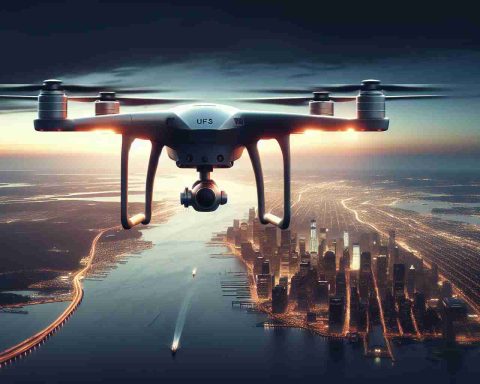A Spectacular Space Launch
In the early hours of Tuesday, January 21, 2025, SpaceX achieved another milestone as a Falcon 9 rocket soared from NASA’s Kennedy Space Center. The mission, dubbed Starlink 13-1, took flight at 12:24 a.m. EST, marking an exciting chapter for the enterprise.
During this launch, the Falcon 9 was suspected to be carrying more than just the standard batch of satellites. The rocket’s lift-off from Launch Complex 39A was slightly overshadowed by a delay in the official broadcast that commenced a few minutes after departure. When the livestream resumed, it did not present the typical telemetry data or visuals of the rocket’s upper stage.
The Falcon 9’s first stage booster, designated B1083, has flown multiple missions, including significant ones such as Crew-8 and CRS-31. After its eighth flight, B1083 successfully landed on the droneship “A Shortfall of Gravitas,” adding to SpaceX’s impressive landing record.
The Starlink 13-1 mission saw the deployment of 21 satellites. Interestingly, while previous similar missions included newer Direct to Cell satellites, none were confirmed for this launch. Speculation arises that possibly Starshield satellites, a government variant, were on board as well. This launch could align with past missions that blended both Starlink and Starshield technology, although no official confirmation has been provided yet. The space community eagerly awaits further updates.
The Wider Implications of SpaceX’s Launches
As SpaceX propels humanity deeper into the cosmos, each successful launch, such as the Starlink 13-1 mission, resonates beyond the immediate thrill of technology. These missions herald a significant shift in our societal structure, particularly in communication and connectivity. The expansion of the Starlink network promises to bridge the digital divide, providing high-speed internet access to underserved regions worldwide. This transformative potential not only enhances individual opportunities but can also stimulate local economies, fostering innovation and entrepreneurship in remote areas.
The cultural ripple effect of increased connectivity cannot be understated. As global communication barriers dissolve, cultural exchange accelerates, allowing for a richer understanding among diverse populations. This interconnectedness may foster a collective global perspective, leading to increased cooperation on pressing issues such as climate change and health crises.
However, launching more satellites raises critical environmental concerns. The risk of space debris proliferation is a looming threat, endangering both current and future missions. The complexity of managing this debris will require international cooperation and innovative solutions to safeguard our space environment.
Looking ahead, the long-term significance of these missions may also include advancements in space travel and exploration. As private companies like SpaceX spearhead these efforts, the vision of international colonization of Mars and beyond slowly transforms from fantasy to feasible reality. The future may hold not just commercial ventures in space, but sustainable practices that prioritize ecological balance both on Earth and in orbit, redefining humanity’s relationship with the universe.
SpaceX Achieves New Heights: Insights on the Starlink 13-1 Launch
An Overview of the Falcon 9 Launch
On January 21, 2025, SpaceX’s Falcon 9 rocket launched from NASA’s Kennedy Space Center at 12:24 a.m. EST, marking an important event in the ongoing expansion of the Starlink satellite constellation. Known as the Starlink 13-1 mission, this launch captured the attention of both space enthusiasts and professionals, showcasing SpaceX’s steadfast commitment to improving global internet connectivity.
Mission Details and Specifications
The Falcon 9 rocket utilized for the Starlink 13-1 mission featured its first stage booster, B1083, which has a notable history, having flown missions including Crew-8 and CRS-31. This mission marked the booster’s eighth flight, further enhancing the sustainability and reusability ethos that SpaceX champions. After the successful launch, B1083 landed on the drone ship “A Shortfall of Gravitas,” ensuring another successful recovery.
Satellite Deployment: What to Expect?
During the Starlink 13-1 mission, 21 satellites were deployed. Notably absent were the new Direct to Cell satellites that had been the focus of previous missions, leading to speculation regarding the alternate payloads. Industry insiders ponder whether the Starshield satellites, a classified variant intended for government use, were part of this launch. This aligns with SpaceX’s increasing integration of multiple types of satellite technology in its launches.
Pros and Cons of Starlink Technology
# Pros:
– Global Coverage: Starlink aims to provide high-speed internet to underserved areas across the globe.
– Scalability: The modular design of satellites allows for rapid expansion of the network.
– Low Latency: Compared to traditional satellite internet, Starlink offers lower latency, improving user experience.
# Cons:
– Space Debris: The increasing number of satellites raises concerns about space debris and potential collisions in orbit.
– Regulatory Challenges: Expansion is slowed by the need to navigate complex international regulatory environments.
Trends and Insights in Space Technology
The Starlink 13-1 mission reflects a growing trend where private companies, such as SpaceX, play a pivotal role in shaping the future of global communications. With continuous advancements in satellite technology, we may see further integration of government and commercial capabilities, potentially paving the way for innovative services that blend both sectors’ strengths.
Predictions for Future Launches
As SpaceX continues its mission to enhance satellite technology, future launches may demonstrate:
– Enhanced Payloads: Further missions might include a mix of both commercial and government satellites.
– Faster Launch Cadence: The company is anticipated to ramp up its launch frequency to meet growing demand for satellite internet services.
– Improved Technologies: Continued advancements in satellite miniaturization and functionality could emerge, leading to even more effective communication solutions globally.
Conclusion
The Starlink 13-1 mission exemplifies SpaceX’s ongoing advancements and the broader trends within the satellite communications sector. As the world increasingly relies on connectivity, SpaceX’s innovative approaches may redefine how global internet access is viewed and implemented. For more information on SpaceX’s ongoing projects and launches, visit SpaceX.



















